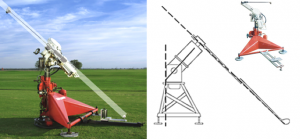The golf swing is perhaps the only motion not to have benefitted from 21st century research and scientific progress. How do we know that? All golfers still suffer from inconsistency, and many, from injury. Why?
- Scientists have only studied isolated swing concepts
- Many of those concepts are based on how a few “experts” swing
The time has come to reinvent the golf swing, so that any human – and we all have exactly the same joints which are designed to move in the exact same directions – can make the movement easily, repeatedly and optimally.
It does not matter what is wrong with an individual’s golf swing – many things can be. What matters is creating a movement which is less likely to produce inconsistency (and injury).
Let’s pretend we can develop any golf swing we like because, after all, very little research exists on what works and what does not. Let’s decide what we want the ball to do and then redesign the golf swing to be simple enough to return the club to the ball in the same way every single time. It is obvious that the club must always return to the very spot where the ball lies, while making an identical circular motion. To be simple and consistent, the human swing should be as simple as that of the Iron Byron golf swing machine, in fact.
Why is the machine so much more reliable than a human golfer? It has only two moving parts. An “engine” in the middle, around which its single “arm” swings. A single “wrist” also swings within the same circular path as the arm. The machine cannot shift weight or change its spine angle and both the arm and the wrist can only swing on a single plane. According to the developers of the machine, it can repeat its motion to within 1/2 percent, and is efficient too, using the minimum energy for maximum distance hit.

So, we golfers should forget all those unproven-in-science concepts we’ve been told to for centuries to use. Forget swing plane, weight shift, wrist cock. To hit the ball straight, high and far, the human “engine” – the pelvis – must be rotating as fast as possible and the left arm (for a right-handed golfer) and club must behave like the single “arm” of the machine.
But wait! We have two arms, not just a left arm. And our “engine” can rotate, but can also move side-to-side and up-and-down from address to impact. Imagine if the motor of a fan, housed in its circular middle, were moving side-to-side and up-and-down!
We therefore need a swing in which the right shoulder and arm are neutralized in their ability to interfere with the left arm and club’s freewheeling ferris-wheel-like downswing movement. At the same time, we require the pelvis to rotate in a purely horizontal, merry-go-round-like manner, with no other direction of motion. In other words, we need a swing which cuts out all excess motion of the body, and positions the interfering right-side joints (mainly shoulder and hip) in positions from which they can cause no harm.
Only one swing in the history of golf is based on considerations for how to simplify the motion so that the human golfer most closely resembles the ball-hitting machine – The Minimalist Golf Swing (MGS). Just as a fan’s motor only rotates, with no movement in any other direction, the human pelvis is set up for pure-rotation before the backswing even begins.
Then all the left arm has to do is move back and through while the swing positions the right shoulder, elbow and wrist so that they cannot possible interfere in the left arm’s movement which returns the club to the ball consistently and at speed. The set-up is all about body rotation in a horizontal (merry-go-round) plane. The backswing moves only the arms, in an inclined-ferris-wheel fashion. The downswing is the sweet, sweet medley of body parts which cannot help but move in the correct sequence, every single time. The arms drop down in the early downswing and are followed in quick succession by the pelvis, shoulders, hands and club. This sequence not only produces speed from quick hip rotation but an inside path to the ball which allows the club to move along the target line momentarily, for perfect trajectory and direction too.
The best test for a golf swing’s efficacy is to study where on the ball’s surface the club connects. In an indoor setting (where the ball can be retrieved) draw two perpendicular circles on a golf ball, and place the ball so that one of the circles is along the target line. Draw an arrow on the circle along the target line to be able to replicate the starting position of the ball. Use a Sharpie to cover your club’s face with ink. When you study where on the ball’s face your club connected it, you will find that the marks are on the inside right quadrant of the ball and below its equator. That happens on a consistent basis ONLY with the MGS. And that is the ONLY ball-flight law one needs to observe when attempting to hit the ball further, straighter and higher.


